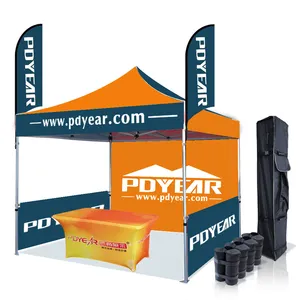
All categories
Featured selections
Trade Assurance
Buyer Central
Help Center
Get the app
Become a supplier

(1293 products available)




















































Tent frame only refers to the skeleton or structure of the tent that provides support and shape. The frame is sold without the tent fabric or canopy. The frame can be made from different materials such as steel, aluminum, fiberglass, or plastic. The frames come in different sizes and shapes that correspond to different types of tents. Some common types of tent frames are:
Tent frames only have a variety of applications and uses in different contexts. Here are some of them:
Camping
People who enjoy camping can use tent frames to create shelters. These frames provide support for tent fabric, offering protection from rain and other elements. The frames make it simple for campers to set up their tents, guaranteeing a safe and comfortable environment while they are in the great outdoors.
Outdoor Events
Frames for party tents are indispensable for outdoor gatherings like weddings, parties, or picnics. They provide a shaded area where people can sit and relax, protecting them from the scorching sun and unexpected rain. Event organizers can set up tent frames quickly, creating a suitable space for guests to enjoy the event.
Sports and Recreation
In sports and recreation, tent frames are used to make areas where athletes and spectators can stay in the shade. For instance, during outdoor sports events, tent frames can be used to provide shaded areas for first aid stations, refreshment stands, or team benches. This makes sure that players and fans have a comfortable place to rest and recover from the heat.
Marketplaces
Market vendors often use tent frames to create stalls. A frame provides a roof that protects the goods from the sun and rain, ensuring they stay in good condition and are visible to customers. With tent frames, market vendors can set up their stalls easily, creating a secure environment to sell their products.
Temporary Structures
Frames are used to make temporary structures that are part of festivals or fairs. These frames are used to make booths, shade areas, and even stages. Tent frames are easy to install and remove, making them perfect for these events that need temporary structures.
Choosing the right tent frame can be a challenging task because there are several factors that need to be considered. Here are some of them:
Support
The primary role of a tent frame is to support the tent and uphold it. The tent would collapse without the frame, making it unusable. Tent frames offer stability to the tents, enabling them to keep the weather elements, such as strong winds and rain.
Setup
Most tent frames are simple to set up and take down, making the process smoother.
Durability
Most tent frames are made from strong materials like steel or aluminum. These materials can withstand different weather conditions without getting damaged. This makes the tent frames last longer since they will not need to be replaced frequently.
Lightweight
Many tent frames are made of light materials like fiberglass or aluminum. This makes them easy to carry and set up, especially for portable tents used for camping.
Easy Assembly
Most tent frames are designed to be easily assembled and disassembled. This is done using poles with connectors that easily fit together and come apart.
Shape
Common shapes for tent frames are rectangular, square, or dome. The shape of a tent frame is essential since it affects the tent's interior space and how well it sheds water. Rectangular and square frames offer more interior space and are common in cabin and tunnel tents. On the other hand, dome frames provide better water shedding and wind resistance, making them popular for geodesic and dome tents.
Side Walls
These frames are often hinged or connected to the main frame to make them easy to set up. The sidewalls can also be rolled up or down to allow ventilation or enclosed space. This design element makes the tent more comfortable and protects the occupants from the weather.
Crossbars
The crossbars are placed horizontally across the sidewalls to give the tent frame additional support. They are fixed on the vertical poles and connected to the sidewalls. These horizontal members help the tent frame bear the weight of snow or rain and prevent the sidewalls from sagging.
Q1: What is a tent frame only?
A1: A tent frame only refers to the metal or aluminum frame that holds the tent up. The tent frame is the structure that supports the tent fabric. The frame comes in different materials, like aluminum or steel. A tent frame without a tarp is sold alongside other components, like poles, stakes, and connectors. Buying a tent frame only is replacing the old frame while keeping the existing tent material.
Q2: What is the difference between a pole and a frame?
A2: Both frames and poles are used to support tents and provide structural support. A tent pole refers to the individual pieces of material used to create the tent's frame. On the other hand, a tent frame refers to the complete structure made of poles, ridges, and other materials.
Q3: Can tent frames be repaired?
A3: Tent frames can be repaired if they bend or break. A repaired frame uses the same materials and ensures the tent stands properly. Repairing a tent frame is simple, as users can use duct tape or PVC pipe to fix any broken poles.
Q4: How should tent frames be stored?
A4: Tent frames must be stored in a dry, cool place out of direct sunlight. Avoid damp or humid areas, as tent frames can develop rust. Store the tent frames in their original packaging or a breathable cloth bag to protect them from dust and debris.